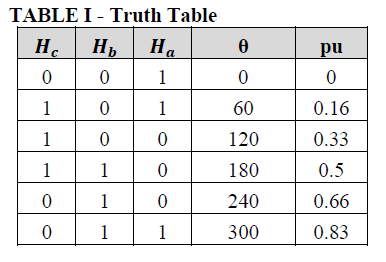Hi all,
I am working on SPRABQ2(Sensored FOC of 3 Phase PMSM) application report. In thie report, ElecTheta and Speed value is calculated using QEP Macro. I want to use Hall effect sensor instead incremantal encoder. I think I can calculate speed of rotor using CAP Macro and Speed Pr Macro. Can ı use CAP macro output to supply ElecTheta value in PARK Macro and IPARK Macro directly?
Thanks a lot.


